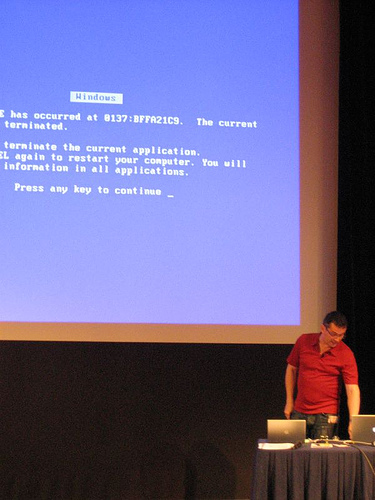Write Once, Pwn Everywhere…. oh and Jetpacking around
By now you have probably read about the critical Java vulnerability and how easy it is to take over a machine from a web page via a Java applet.
Apparently, Sun fixed it fairly quickly, but even then some people say their fix was too specific and thus there are still problems. Apple on the other hand, were not diligent and are still yet to provide a fix. Ouch.
Painful news as JavaOne approaches and Sun tries to push JavaFX. I was trying to think of a Java applet that I have used (knowingly) in the recent past, and I think the only candidate is the Facebook photo uploader.
I have been watching some research for a talk on JavaFX and I am really torn. In theory, the Java platform is phenomenal and should be a great choice for doing this kind of development. The scene graph work in JavaFX is very nicely done, but the implementation seems to be a touch off in much of what I have seen. Scrolling causing the applet to go blank? Browser crashes? Ouch. But, JavaFX is new, and has a chance to get better. Their problem is that they are squeezed from both sides. The browser platform itself is accelerating quickly, and it has the advantage of being native. Once you go to plugin land you are competing with Flash with its large share and proven ability.
Getting webby

I find myself wanting to get more and more webby. This is why I was excited to work with the Jetpack project that we just launched today at Mozilla Labs. Being able to extend the browser using Web technology itself is going to open the door for more playing. People have created 7000 addons for Firefox alone, but as someone who has done a touch of XUL, I am happy to stay in my familiar territory of HTML, CSS, JS. Jetpack has just been born, and is incredibly early stage, but I can’t wait to see it grow and get the APIs that people want in a secure extensible model.
You will see a lot of Bespin in there too. Below is a screencast where I create a Jetpack feature on the fly (no reloads!) using Bespin, and once you install Jetpack it embeds the puppy into the tutorial and the developer area too. Much more than can be done though!








